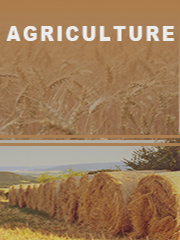TOP CATEGORY: Chemicals & Materials | Life Sciences | Banking & Finance | ICT Media

Download Report PDF Instantly
Report overview
Bioherbicides consist of phytotoxins, pathogens, and other microbes used as biological weed control. Bioherbicides may be compounds and secondary metabolites derived from microbes such as fungi, bacteria or protozoa; or phytotoxic plant residues, extracts or single compounds derived from other plant species.
This report aims to provide a comprehensive presentation of the global market for Bioherbicide, with both quantitative and qualitative analysis, to help readers develop business/growth strategies, assess the market competitive situation, analyze their position in the current marketplace, and make informed business decisions regarding Bioherbicide. This report contains market size and forecasts of Bioherbicide in global, including the following market information:
The global Bioherbicide market was valued at US$ 48 million in 2022 and is projected to reach US$ 93 million by 2029, at a CAGR of 9.8% during the forecast period. The influence of COVID-19 and the Russia-Ukraine War were considered while estimating market sizes.
The global top 5 Bioherbicide manufacturers include Marrone Bio Innovations, Belchim Crop Protection, Koppert Biological Systems, BioHerbicides Australia and Emery Oleochemicals, top 6 players accounted for about 70% of global market share in 2019.
Base on types, Bioherbicide can be divided into Mycoherbicide, Bacterial Herbicide and Others. Among them, Mycoherbicide Occupied the largest sales share, it accounyed for 47.93% sales share in 2018. In terms of the applications, Agricultural Crop field occupied the most share, with a 64.46% in 2018.
Geographically, Americas was the largest consumer of bioherbicides, accounting for almost 38.61% of the global market. The growing awareness among farmers about organic farming and the environment safety concerns in the region are some of the significant factors driving the market. Initiatives taken by the regional governments towards health and environment safety are likely to play an important role in driving the market in the US and Canada.
We surveyed the Bioherbicide manufacturers, suppliers, distributors and industry experts on this industry, involving the sales, revenue, demand, price change, product type, recent development and plan, industry trends, drivers, challenges, obstacles, and potential risks.
Total Market by Segment:
Global Bioherbicide Market, by Type, 2018-2023, 2024-2029 ($ Millions) & (MT)
Global Bioherbicide Market Segment Percentages, by Type, 2022 (%)
Global Bioherbicide Market, by Application, 2018-2023, 2024-2029 ($ Millions) & (MT)
Global Bioherbicide Market Segment Percentages, by Application, 2022 (%)
Global Bioherbicide Market, By Region and Country, 2018-2023, 2024-2029 ($ Millions) & (MT)
Global Bioherbicide Market Segment Percentages, By Region and Country, 2022 (%)
Competitor Analysis
The report also provides analysis of leading market participants including:
Further, the report presents profiles of competitors in the market, key players include:
Outline of Major Chapters:
Chapter 1: Introduces the definition of Bioherbicide, market overview.
Chapter 2: Global Bioherbicide market size in revenue and volume.
Chapter 3: Detailed analysis of Bioherbicide manufacturers competitive landscape, price, sales and revenue market share, latest development plan, merger, and acquisition information, etc.
Chapter 4: Provides the analysis of various market segments by type, covering the market size and development potential of each market segment, to help readers find the blue ocean market in different market segments.
Chapter 5: Provides the analysis of various market segments by application, covering the market size and development potential of each market segment, to help readers find the blue ocean market in different downstream markets.
Chapter 6: Sales of Bioherbicide in regional level and country level. It provides a quantitative analysis of the market size and development potential of each region and its main countries and introduces the market development, future development prospects, market space of each country in the world.
Chapter 7: Provides profiles of key players, introducing the basic situation of the main companies in the market in detail, including product sales, revenue, price, gross margin, product introduction, recent development, etc.
Chapter 8: Global Bioherbicide capacity by region & country.
Chapter 9: Introduces the market dynamics, latest developments of the market, the driving factors and restrictive factors of the market, the challenges and risks faced by manufacturers in the industry, and the analysis of relevant policies in the industry.
Chapter 10: Analysis of industrial chain, including the upstream and downstream of the industry.
Chapter 11: The main points and conclusions of the report.